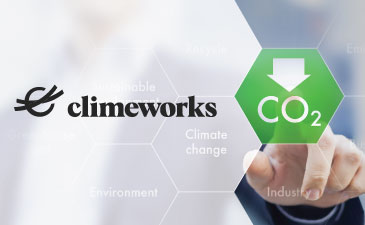Why your Organisation must not Ignore the Metaverse

Poor grasp of the technology, scepticism over its potential, or the natural conservatism of business: these are the three main reasons some organisations simply don’t take the metaverse seriously in 2022. That same mistrust was there in the 1990s when the internet began.
Cast your mind back and you may remember various talking heads of the day asking questions such as whether we need global digital communication. In hindsight 30 years later, they were wrong; the internet permeates our lives in ways we never imagined, and it continues to do so. Nobody is willing to go back to how things where before.
Now, that scepticism is back for the metaverse as we predict deeper immersion. The question is: where do we go as a society and as a business culture?
A Sign of Things to Come
The reluctance to enter the metaverse and even the confusion over what it means is perfectly understandable right now. Many people are still getting to grips with cryptocurrencies and NFTs (non-fungible tokens) and all the concerns that they bring as they enter spaces where they were previously unknown.
Web3 or as it is also known MV3 is almost certainly to be the next phase of our digital lives and the evolutionary environment of digital spaces.
Millions are already getting onboard the metaverse – an environment still in the early stages. Those who do not, whether that’s the general population or in business, will almost certainly be left behind.
Many saw this coming and so it should come as a surprise to nobody. Facebook has nearly three billion active users a month. It’s sister platform Instagram has around one billion. Fortnite, the online gaming platform, has 350 million users. Fortnite is the biggest and best known of its kind, but it is not the only one. The digital lifestyle and immersive experiences are already here.
Teenagers and preteens are the most tech savvy ever. Generation Z is the first to grow up with the internet as an integral part of their lives. That integration is only going to increase through Generation Z, and their children, and their children.
Real Life Goes Digital
These tech-savvy generations are already here and they’re increasingly moving from the concept of renting online service to ownership of digital services.
Identifying this, some well-known labels and brands are transitioning to Web3 so that they can offer their products as digital items in the metaverse. Examples:
- A collaboration between Zara (the Spanish fashion company) and Ader Error (a South Korean label) to offer digital makeup and clothing for online avatars.
- Adidas Originals and Nikeland have both stated clear intent to step into new creative frontiers with their products and services
This has all the makings of a new economic landscape and the jobs to go with it. Web3 will create employment in everything from world building, events, guided tours, digital fashion design… the list goes on. If this seems a little silly, know that some are predicting whole bodysuits, haptic (touch sensitive) gloves and further AR development as additions to current VR and AR. These things are already slated as the next generation of wearable technology.
Further, the creative economy is set to explode as these technologies become mainstream.
Blurred Boundaries Between Reality and the Digital
Brands currently operating in the physical space, and who sell real world products, realise they have a huge opportunity to expand into territories they never previously considered. They also realise that if they do not, they will get left behind.
It will be a huge learning curve, but it will also mean collaborations and partnerships between brands who previously may have existed in completely different physical spaces. It means creating digital identities and partnerships to seize the potential of Web3.
While this may sound very Black Mirror or Ready Player One, this technology is now closer than it ever was. We can no longer deny that it is here or that there are benefits for everyone.
Much like everyone insisted we all had to have a digital brand on the 2000s and 2010s and marketing strategies, we are now in a new situation to which businesses must adapt.
The main question for businesses right now is not whether they are going to adapt to Web3/MV3, but how they are going to do it.


